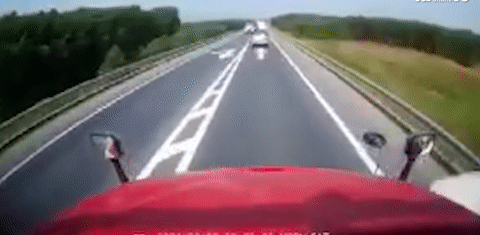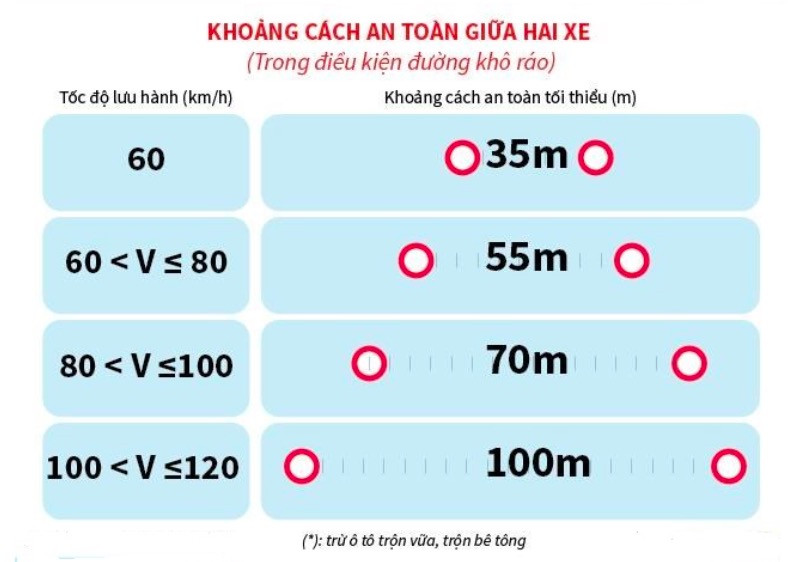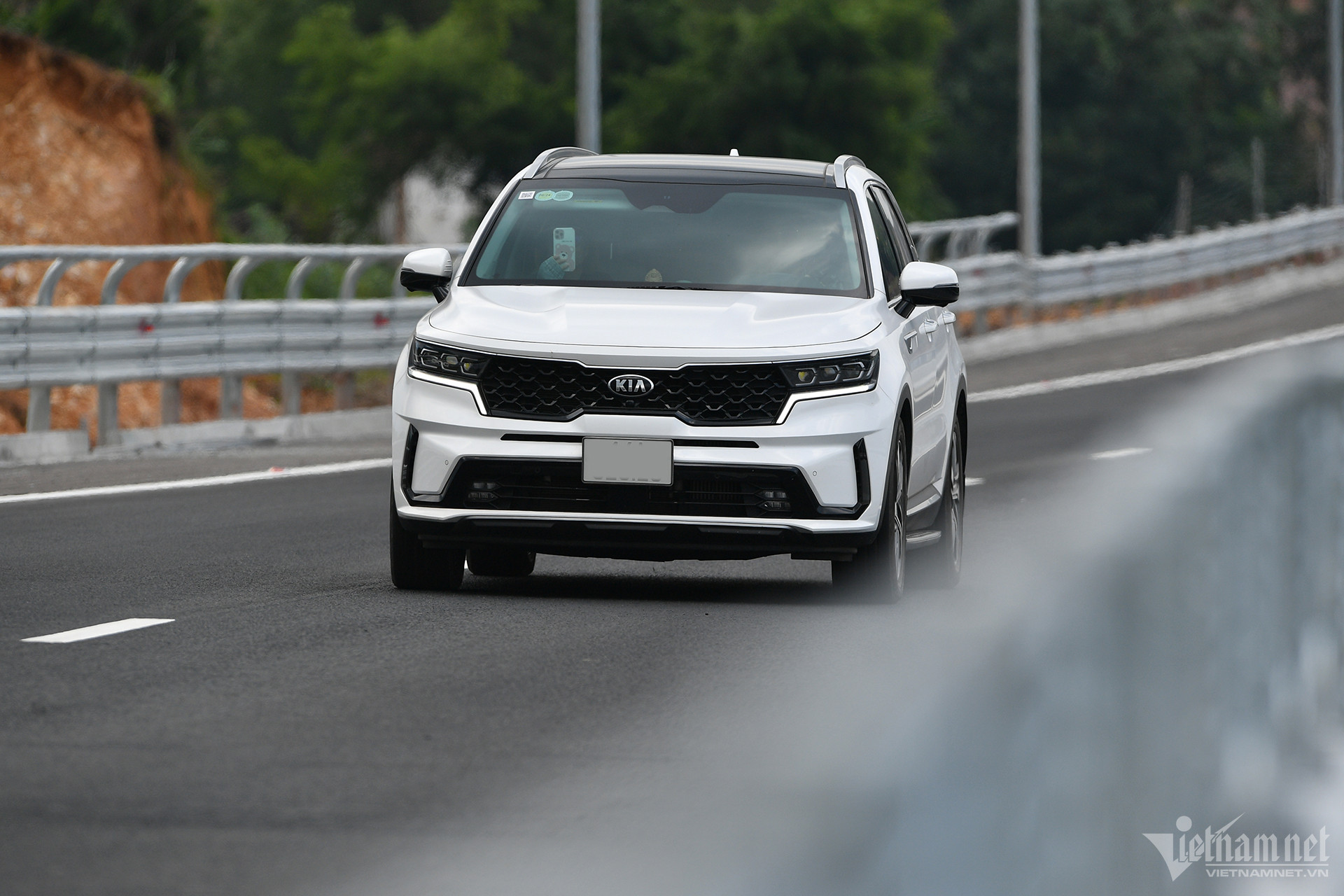The remarkably serious accident on the Cam Lo – La Son pass on the morning of February 18 has raised questions about the safety of driving on highways, especially the handling skills of drivers in this case.

With over 10 years of experience in training and instructing drivers on various types of roads, Mr. Hoang Tan – a driving instructor in Hanoi, said that compared to driving on city streets or country roads, driving on highways is the easiest as it requires less maneuvering.
However, even though driving on highways is relatively easy, it doesn’t mean it’s the easiest because of the high speeds, any mistakes or carelessness may not have a chance to be corrected.
In addition, Mr. Tan also believes that some highways in Vietnam are not yet complete (with few lanes, still allowing motorcycles, lacking rest areas for parking, etc.) and the driving culture of some drivers is not high, so there are still many risks leading to accidents. Therefore, drivers need to have certain experience and handling skills.

According to Mr. Hoang Tan, driving on highways is relatively easy, but not easy. (Photo: NVCC)
When driving on highways, it is necessary to remember at least the following 7 rules to ensure safety for yourself and the surrounding vehicles:
Quick overview:
• 1. Ensure the correct speed
• 2. Maintain a safe distance
• 3. Drive in the appropriate lane
• 4. Only change lanes when it’s safe
• 5. Avoid overtaking
• 6. Do not enter emergency lanes
• 7. Minimize stopping or parking on the highway
1. Ensure the correct speed
Most highways in Vietnam allow speeds ranging from 90-120 km/h. The maximum speed on each section of the road is determined based on the technical conditions and traffic volume. Therefore, intentionally driving faster than the speed limit will not only pose unexpected dangers but also result in heavy fines.
According to Mr. Hoang Tan, driving at the correct speed not only means driving at or below the maximum speed limit but also maintaining the minimum speed limit. Driving too slow on the highway sometimes can be even more dangerous than speeding.
2. Maintain a safe distance
Safety experts believe that maintaining a safe distance is crucial when driving on highways because at high speeds, if the correct distance is not maintained, there may not be enough time to react (brake, steer, etc.) in unexpected situations, increasing the risk of accidents.
In terms of safe distance, drivers can refer to the signs placed on each road or based on the regulations on safe distance on roads according to Circular No. 31/2019/TT-BGTVT dated August 29, 2019.

Safe distance regulations on roads according to Circular No. 31/2019/TT-BGTVT dated August 29, 2019.
In addition, experienced drivers can apply the “3-second” rule to measure the distance between their vehicle and the vehicle in front. For example, if a vehicle is moving at a speed of 90 km/h, it travels 25 meters per second. In 3 seconds, the vehicle will travel 75 meters. This is a safe distance for the driver to have enough time to react, brake, and avoid collisions.
3. Drive in the appropriate lane
In Vietnam, highways usually have 2-3 lanes for vehicles. One principle is that the left lane always has a higher speed than the right lane.
Mr. Tan advised that if traveling at an average speed, it is recommended to drive in the middle lane and avoid “hugging” the left lane, as it is intended for vehicles that want to overtake. Driving in the middle lane provides us with a better view and more options for steering in case of unexpected situations.

Maintaining a safe distance and ensuring safety when changing lanes are crucial skills that drivers must master when on the highway. (Photo: Hoang Hiep)
4. Only change lanes when it’s safe
Changing lanes is a skill that drivers need to pay close attention to when driving on highways. Experts say that when merging onto a highway, drivers should maintain or slightly increase their speed and then change lanes sequentially. When it feels stable in the adjacent lane, then proceed to the next lane.
When changing lanes, drivers must observe through the rearview mirrors and signal using indicators to notify other vehicles. Sudden and consecutive lane changes are dangerous actions that drivers should avoid.
5. Avoid overtaking
Overtaking without safety precautions is the leading cause of accidents on highways. In reality, many drivers, after overtaking large vehicles on the right side, quickly steer to the left side, leading to dangerous situations of cutting in and causing the vehicle to rotate sideways.
According to Mr. Tan, when driving on highways, especially when passing other vehicles, it is not advisable to “rush” to overtake, especially overtaking at unsafe speeds and distances. When overtaking, it is necessary to signal with the horn, lights, and only overtake when all safety conditions are met.
(A dangerous situation commonly encountered when overtaking on the highway. Video source: OFFB)
6. Do not enter emergency lanes
Many drivers immediately move into the emergency lane when they encounter congestion, but this poses many dangers as there may be unexpected obstacles or vehicles in this lane. Therefore, in any case, drivers should not enter this lane to ensure safety.
7. Minimize stopping or parking on the highway
Except in cases of vehicle breakdown or unforeseeable emergencies, vehicles are not allowed to stop or park on the highway. When necessary to stop, the driver should move the vehicle to the emergency lane close to the right shoulder, and at the same time, place a reflective warning device to notify drivers behind with a minimum distance of 100 meters.
In addition to being unsafe, stopping or parking on the highway at unauthorized locations can result in heavy fines ranging from 10-12 million VND (~450-540 USD) and an additional penalty of a driver’s license suspension of 1-3 months.
According to Vietnamnet

































